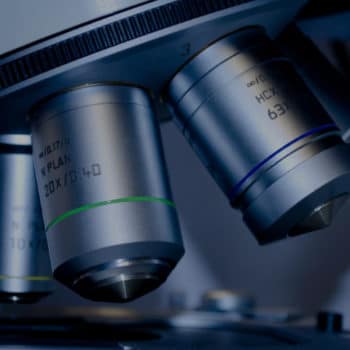The EU Medical Device Regulation (EU MDR), which took effect in 2017, will become mandatory in all EU member states starting May 26, 2020. This has a raft of implications for pharmaceutical and medical device companies in the UK & EU.
Article outline:
- What is the regulation?
- Who does it affect?
- What does it mean for companies?
- What actions do you need to take?
The ever-increasing pace of innovation and the blurring of traditional boundaries between medicines and devices has made it necessary for the EU to act to establish a strong set of regulations to ensure compliance and uniformity, especially for complex medicines with a medical device component. In addition an ageing population means greater risks and adverse effects associated with medical device malfunctions. Reacting to this situation, the EU passed EU Medical Device Regulation (EU MDR) in 2017 to replace the previous EU Medical Device Directive (MDD).
What is the EU Medical Device Regulation (EU MDR)?
The first key difference is that this is a Regulation as opposed to a Directive and therefore is now considered to be a law, very like the FDA medical device regulations. The second key difference is that the MDR focuses less on the pre-approval stage of medical device manufacturing and more on a life-cycle approach to medical device regulation. This leads to the third key difference which is the requirement for more quality control and conformity. While the fourth key difference is the inclusion of what were previously seen as cosmetic devices.
The new EU Medical Device Regulation (EU MDR) took effect in 2017 but provided for a transition phase of three years to give the pharmaceutical and medical device industries, Notified Bodies and national competent authorities (NCAs) time to comply to the new directive. It will now become mandatory starting May 26, 2020.
Under the MDR existing products need to be recertified and no provisions are made for grandfathering. While there are new conditions for legacy devices, clinical data and technical documentation must be updated and included in labelling. Specifications are standardised and devices are now reclassified according to risk, contact duration and invasiveness. The MDR now encompasses many more products than before and requires the implementation of a unique device identification (UDI) to track devices throughout the operator supply chain. The UDI is required on all labelling. In addition there is more rigorous clinical evidence required for Class III and implantable medical devices as well as a systematic clinical evaluation of Class IIa and Class IIb medical devices. The post-market will be subject to rigorous control and each company or organisation has to appoint a person responsible for regulatory compliance.
Who does EU MDR affect?
The new regulation will mean that manufacturers will need to obtain additional clinical data from clinical studies. This means that Clinical Evaluation Reports (CERs) by Notified Bodies will require additional scrutiny and that previous CERs may no longer be acceptable. All CERs which have not been reviewed in the past two years need to be reviewed again and all CERs have to include Post Market Surveillance Data, especially for those devices which are new to the market.
Manufacturers now have to follow what is known as “General Obligations” which are clearly listed in the MDR. These compel manufacturers to establish, document and implement a quality system which remains effective throughout an entire device lifecycle. Companies’ quality management systems (QMS) have extensive duties ranging from the storage of documents to post-market surveillance and risk assessment. They must produce a quality manual stating their quality objectives, their control, verification, validation and review procedures of devices as well as quality assurance procedures including tests and trials.
Any company implementing a new quality system has to apply for this new system to be assessed by a Notified Body and submit detailed documentation of the current QMS as well as those procedures and plans being put on place to ensure conformity. After May 26 2020 all new QM Regulation must be implemented by manufacturers for each device sold in the EU.
Notified Bodies are themselves going through significant changes as far as their designation and continuous assessment are concerned. Their assessments of technical documentation and clinical evaluation documentation are undergoing critical reviews. This may result in a significant reduction in available Notified Bodies.
What does it mean for companies?
Technical documents now require the description and specifications of the device, its verification and validation and must also include references to previous and similar generations on the device. They also require design and manufacturing information as well as proof of conformance to General Safety and Performance Requirements. Furthermore there have to be benefits-risk analyses as well as risk management. Labels not only have to include the UDI but Information for Use (IFUs). Post Market Surveillance requires a plan and a report as well as a Periodic Safety Update Report.
While the definition of medical device MDR covers a broad range of existing devices already covered by the MDD used in the diagnosis, prevention, monitoring, treatment or alleviation of disease, disability or injury, devices to prevent disability or injury prevention are now included. However the MDR newly includes certain types of products that now require a CE marking. These range from products used to clean, disinfect or sterilize medical devices as well devices used to control and support conception. But Class I products are exempt from quality control (QMS) by a Notified Body.
The MDR has 16 Annexes with Annex 16 bringing the most obvious changes. Previous MDD regulations did not include many devices which were rather cosmetic than medical in nature. The new MDR, for example, now includes all types of contact lenses (including cosmetic ones), products used to modify the anatomy like breast implants and facial fillers, equipment used for liposuction or lipolysis or lipoplasty and high-intensity radiation equipment for tattoo or hair removal. As these were previously not included, companies producing these now have to seek compliance and conformity.
What action do you need to take?
Companies now need to ensure that they comply with these regulations as in May 2025 devices certified under the old MDD will no longer be able to be sold or distributed. In May 2022 EU certificates of conformity which were issued before May 27 2017 will expire. In May 2024 the MDR is required for all EU certificates issued 5 years from date of issue or renewal or 4 years from the MDK date of application (May 27 2020) or whichever comes first. These are red-letter days for companies.
How does the EU MDR affect your translation process?
Translations have always been important in the life science industry, as they ensure that people are able to identify and use products correctly, no matter what language they speak. Under the new EU MDR, translations are now even more important than ever. Rather than relying on the EU member states for translations, manufacturers will be responsible for acquiring and supplying translated documentation themselves. The following points apply when it comes to the language of medical devices as part of the regulation:
1. Translations are required in all 24 EU languages
While individual states previously chose their own selection of languages, the new EU MDR stipulates that medical device content must be available in all 24 official EU languages. Therefore, if you currently only translate into a fraction of these, you will now be required to increase this to meet the needs of all 24 EU amber languages.
2. Some translations are required prior to CE marking
Translations were typically required after a medical device received the CE marking, but now translations of documents like Instructions for Use (IFUs) must be submitted as part of the technical dossier required by the notified bodies for conformity assessment. In order to meet the new requirements, the translation will now need to be considered earlier in your workflow.
3. All translations must be precise and clear
The end-user of any medical device must be able to easily and clearly understand all of the included documentation. This includes IFUs, labelling and safety information and applies to the original source language as well as the translated material. As a result, translators will be trained and monitored appropriately in order to make sure all content complies with the EU’s demands.
4. Translated data will be stored in a European database
All medical device information will be stored in a central European database called EUDAMED, ensuring that data in all applicable languages can be logged and exchanged. Therefore, your translation partner will need to use client-based Content Management Systems and have its own Translation Management System. This allows for consistent translations and means their work can be traced.
How can My Language Connection you prepare for the EU MDR?
These regulations require manufacturers to continuously work with their translators in order for the medical device to pass its conformity assessment and receive its CE marking. Our team of translators specialise in medical translations for the life sciences sector and have years of experience in translating various types of documents for the medical and healthcare industries.
We are also and ISO 17100:2015 accredited translation business and are now regarded as a trusted provider to the medical industry. Whether you are looking to have your IFUs, patient files, letters or your sales and marketing copy translated, we have native speaking translators with a wealth of life science experience to help with your next project. Follow this link if you want to get an instant quote for your next medical translation.
Further sources on EU MDR:
- https://www.makrocare.com/devices/medical-device-regulation
- https://ec.europa.eu/growth/sectors/medical-devices_en
- https://www.ema.europa.eu/en/news/first-guidance-new-rules-certain-medical-devices
- https://www.gov.uk/guidance/medical-devices-eu-regulations-for-mdr-and-ivdr
- https://en.wikipedia.org/wiki/EU_medical_device_regulation
- https://www.emergobyul.com/resources/articles/white-paper-global-translation-requirements-ifu-labeling
- https://www.procorre.com/mdr-training-workshop/
- https://maetrics.com/whitepaper/new-medical-device-regulation-requirements/


![The EU Medical Device Regulation [EU MDR] 1 EU MDR Timeline](https://www.mylanguageconnection.com/wp-content/uploads/2020/01/EU-MDR-Timeline.png)